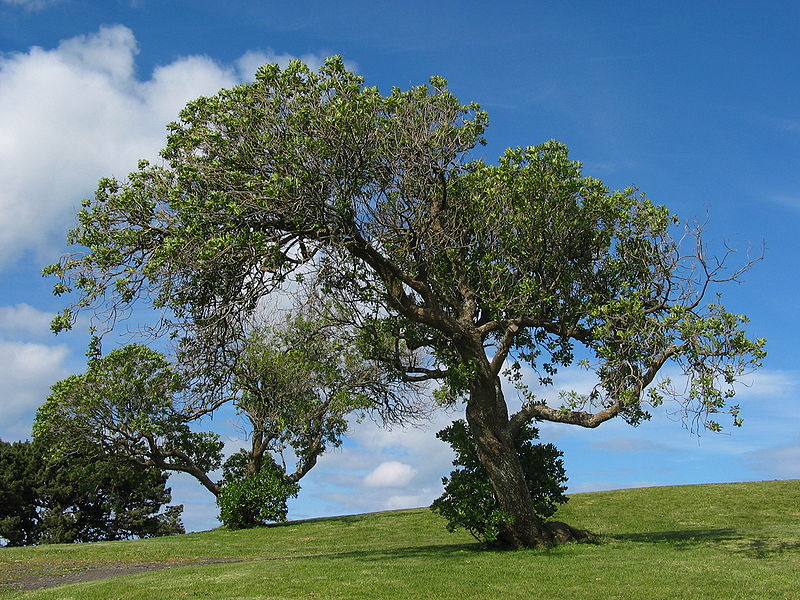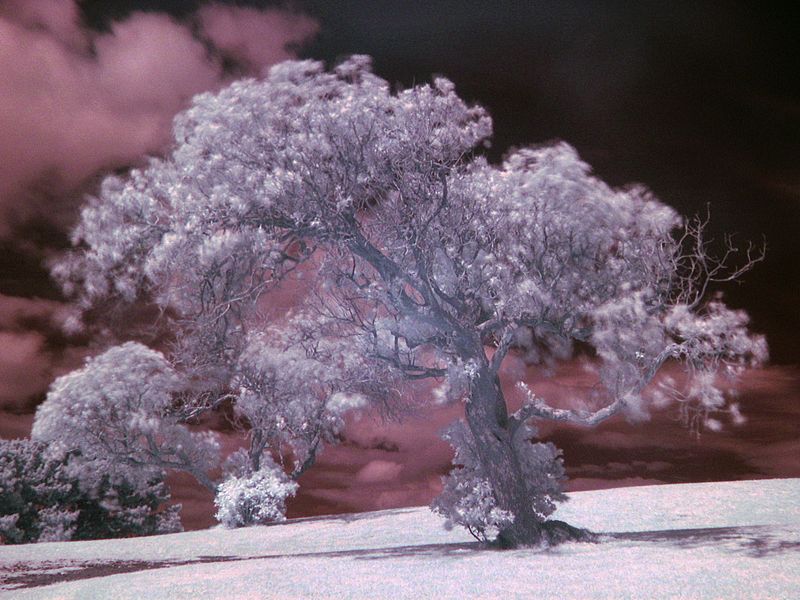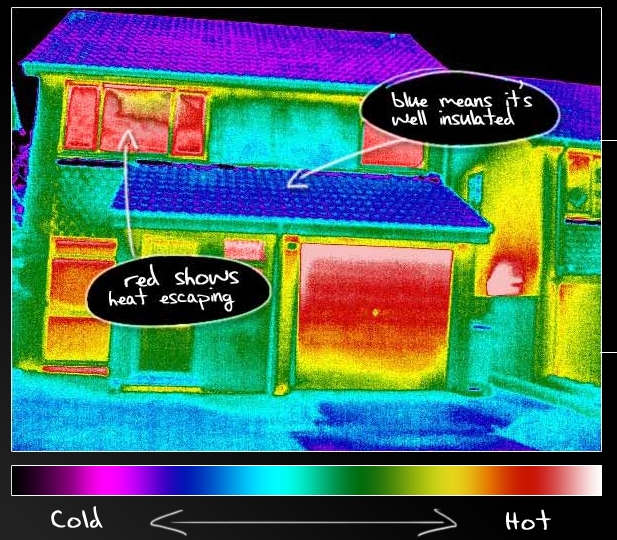

and photographed with normal film
and photographed using near IR film
 |
 |
| visible light
reflected by the tree and photographed with normal film |
near IR light
reflected by the tree and photographed using near IR film |

